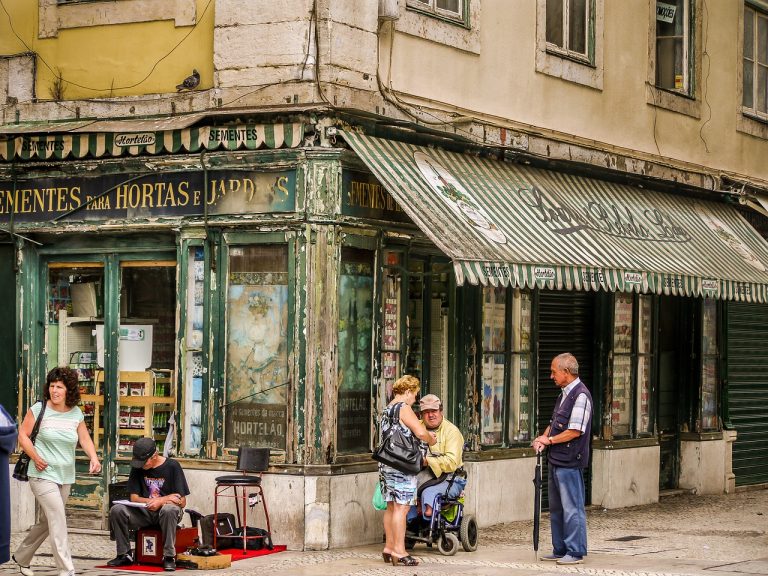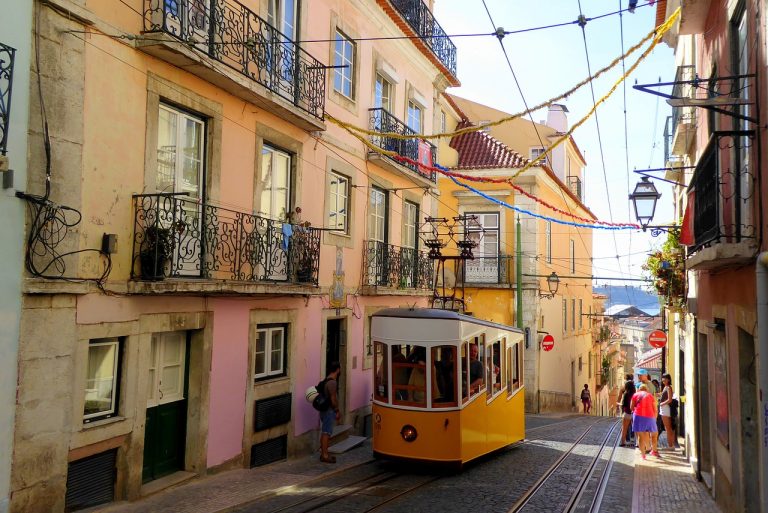Lisbon Portugal Video
Local Myths and Legends of Lisbon Portugal
Lisbon, the capital city of Portugal, is a city steeped in history and folklore. From ancient tales passed down through generations to more recent myths, the city is filled with captivating stories that add to its charm. In this article, we will explore ten local myths and legends of Lisbon, shedding light on the fascinating narratives that have shaped the city’s culture and identity.
The Legend of Saint Anthony’s Miracles
- Miracle of the Fish: According to the legend, Saint Anthony, the patron saint of Lisbon, preached to a group of disbelievers who refused to listen. In a miraculous turn of events, a group of fish emerged from the Tagus River and listened attentively to his sermon.
- The Lost Sermon: Another legend tells of Saint Anthony delivering a sermon at the Lisbon Cathedral. As he spoke, the crowd was so captivated that they failed to notice a child who had gone missing. Saint Anthony’s sermon was interrupted as he rushed to find the child, miraculously returning him to his mother’s arms.
- The Miracle of the Mule: In this tale, a heretic refused to kneel before the Eucharist during a procession. As a punishment, the heretic’s mule knelt down instead, demonstrating the power and reverence of the sacrament.
The Enchanted Moura of Castelo Sao Jorge
- The Beautiful Moura: The legend speaks of a beautiful Moorish princess who was held captive in Castelo Sao Jorge. It is said that her beauty and charm were so captivating that she enchanted anyone who looked upon her.
- The Lost Love: The princess fell in love with a Christian knight, but their love was forbidden due to religious differences. Despite their separation, the princess’s enchantment remained, and her spirit is said to wander the castle grounds, forever longing for her lost love.
- The Mysterious Disappearance: There are whispers of people who claim to have encountered the Moura, only to have her vanish into thin air, leaving behind an air of mystery and intrigue.
Lisbon Portugal Image 1: 
The Ghostly Nun of Carmo Convent
- The Tragic Tale: The ghostly nun is said to be the spirit of a young nun who fell in love with a soldier during the French invasions of the 19th century. Their forbidden love led to tragedy, as the nun was forced to take her own life.
- The Haunting Chant: Visitors to the Carmo Convent have reported hearing the faint sound of a nun’s chant echoing through the ruins. It is believed to be the ghostly nun’s lament for her lost love.
- The Vanishing Apparition: Some claim to have seen the ghostly figure of the nun wandering through the convent, only for her to disappear into thin air when approached.
The Legend of Mouraria
- The Moorish Quarter: Mouraria is an ancient neighborhood in Lisbon with a rich history. Legend has it that this area was named after the beautiful Moorish princess who enchanted all who saw her.
- The Melting Pot of Cultures: Mouraria is known for its multicultural atmosphere, with influences from various cultures that have shaped its identity over the centuries.
- The Fado Connection: Fado, the traditional Portuguese music genre, is said to have its roots in Mouraria. The neighborhood’s narrow streets and intimate atmosphere provided the perfect backdrop for the heartfelt and melancholic songs.
Lisbon Portugal Image 2: 
The Curse of the Tagus River
- The Wrath of the River: According to local lore, the Tagus River was cursed by a Moorish king who was defeated in battle. It is said that anyone who falls into the river will be doomed to a lifetime of bad luck.
- The Mysterious Drownings: Over the years, there have been numerous reports of people mysteriously drowning in the Tagus River, leading some to believe that the curse still holds true.
- The Protective Amulets: To ward off the curse, many locals wear amulets or charms believed to offer protection against the river’s malevolent powers.
The Legend of the Seven Hills
- The Hills of Lisbon: Lisbon is famously known as the city of seven hills. Legend has it that these hills were created by the giant Adamastor, who threw enormous rocks at the city during a battle with the gods.
- The Mythical Giant: Adamastor was a mythical giant who guarded the seas and posed a threat to sailors. In the legend, the gods punished him by turning him into a monstrous rock formation.
- The Symbolic Significance: The seven hills of Lisbon are not only a geographical feature but also a symbol of the city’s resilience and enduring spirit.
The Legend of the Aqueduct Ghost
- The Spectral Apparition: The ghost of a worker who died during the construction of the Águas Livres Aqueduct is said to haunt its underground tunnels. Visitors have reported eerie encounters and unexplained phenomena in the vicinity.
- The Tragic Accident: During the construction, a worker fell to his death, and his spirit is believed to remain trapped within the aqueduct, forever seeking peace.
- The Mysterious Footsteps: Some claim to have heard ghostly footsteps echoing through the tunnels, as if the spirit of the deceased worker continues to roam the aqueduct.
Lisbon Portugal Image 3: 
The Legend of the Miracle of the Crows
- The Crow’s Feast: Legend has it that during a severe famine, crows brought bread to the people of Lisbon, saving them from starvation. To commemorate this miracle, a statue of Saint Vincent, the city’s patron saint, was erected.
- The Crow’s Protection: Crows are considered sacred in Lisbon, and harming them is believed to bring bad luck. They are seen as protectors of the city and its inhabitants.
- The Crow’s Presence: To this day, crows can be found throughout the city, symbolizing the enduring connection between the people of Lisbon and their patron saint.
The Legend of the Lisbon Earthquake
- The Great Earthquake: In 1755, Lisbon was struck by a devastating earthquake, resulting in the destruction of much of the city. The earthquake, followed by a tsunami and fires, caused widespread devastation and loss of life.
- The Wrath of God: The earthquake was seen by many as a punishment from God for the city’s perceived sins and immoral behavior.
- The Rebuilding of Lisbon: The earthquake led to significant changes in the city’s architecture and urban planning, shaping the Lisbon we know today.
The Myth of the Lisbon Mermaid
- The Mermaid’s Lament: According to local legend, a mermaid was captured in the Tagus River and brought to Lisbon. The mermaid’s sorrowful song enchanted all who heard it, but she longed to return to the sea.
- The Escape: As the story goes, the mermaid escaped her captors and returned to the river, leaving behind an everlasting longing in the hearts of those who heard her song.
- The Mermaid’s Legacy: The myth of the Lisbon Mermaid serves as a reminder of the city’s deep connection to the sea and its mythical creatures.
Conclusion
The myths and legends of Lisbon weave a captivating tapestry of folklore that adds depth and intrigue to the city’s rich history. From the miraculous tales of Saint Anthony to the haunting presence of ghostly apparitions, these stories reflect the cultural heritage and imagination of the people of Lisbon. Exploring these myths not only provides a glimpse into the city’s past but also enhances the allure of present-day Lisbon.
References
– lisbon.net
– visitlisboa.com
– culturadelisboa.pt







